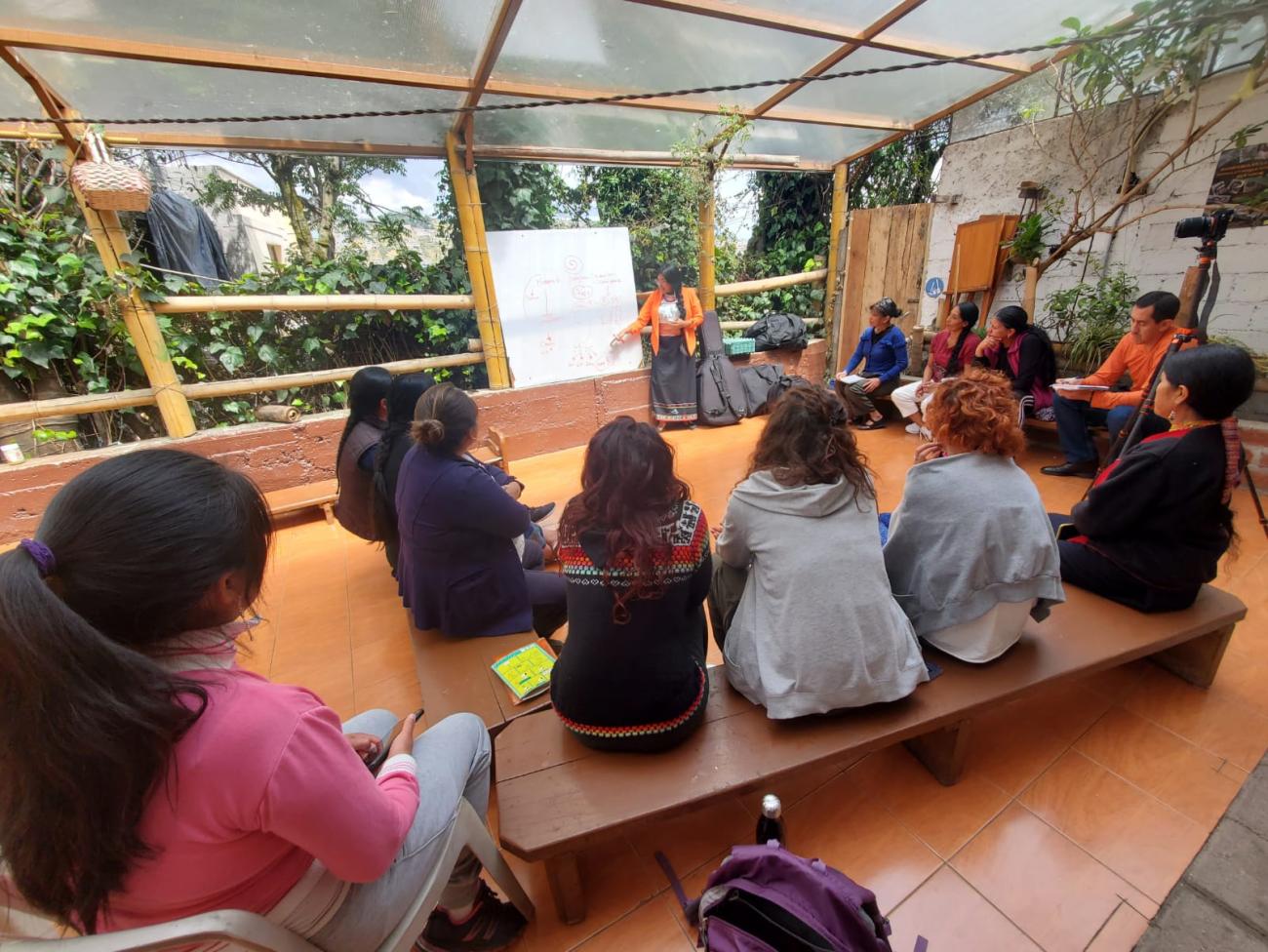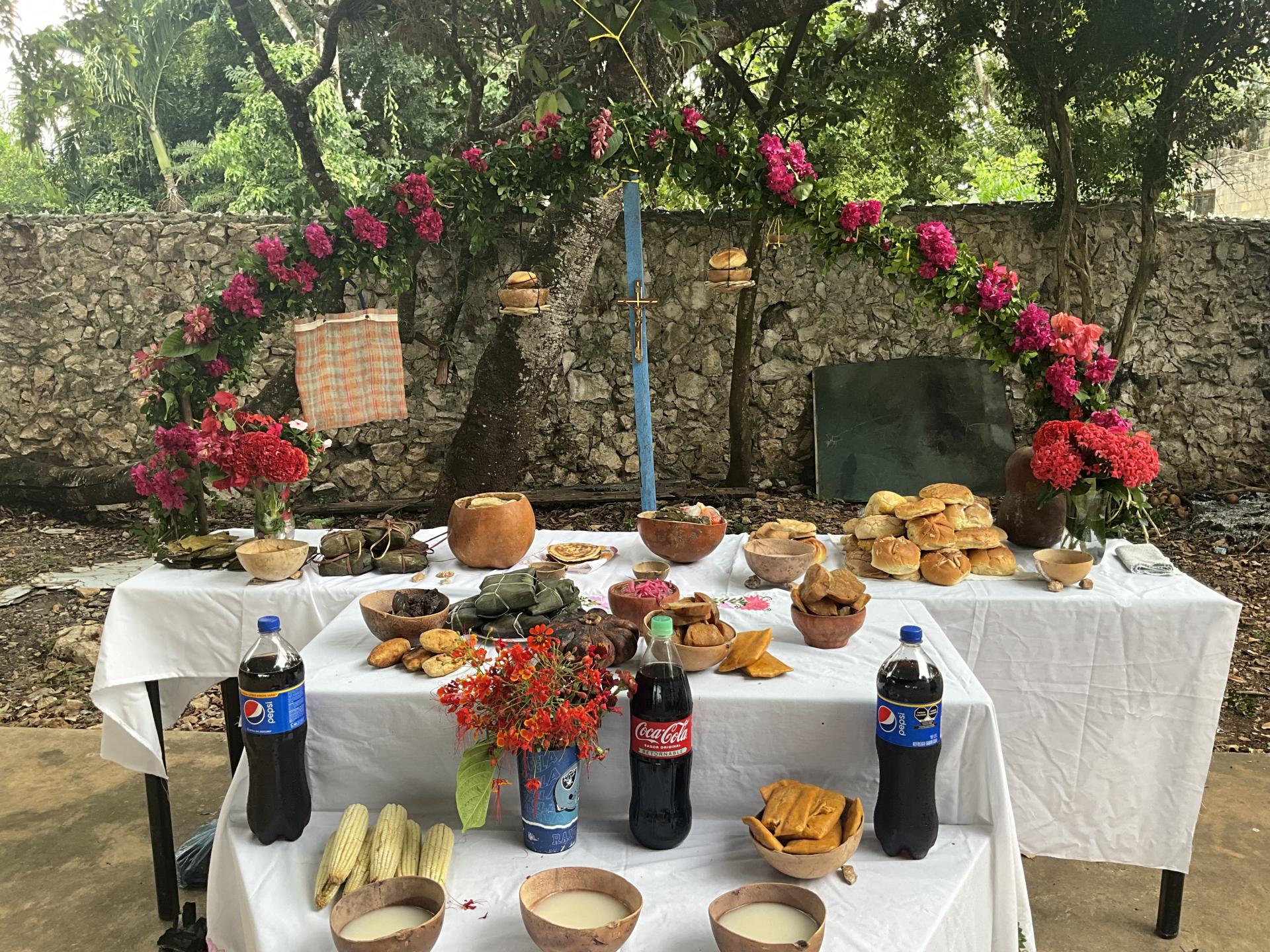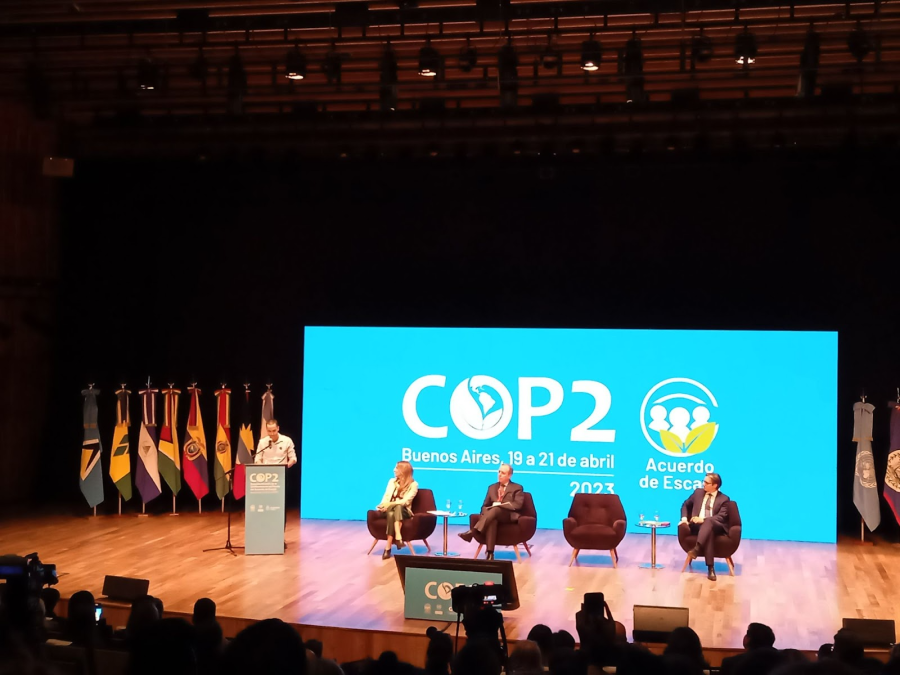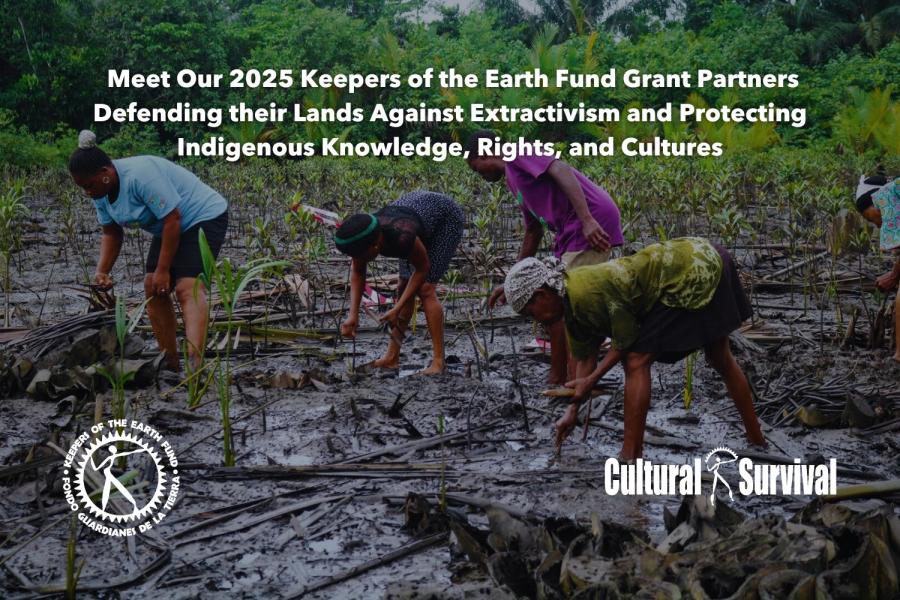
The importance of educating youth in their own languages about their own cultures using curricula designed by, or with the participation of, Indigenous Peoples cannot be stressed enough. When youth are taught content in a manner that is culturally responsive to their Indigenous communities, it strengthens their identities and history, creating healthy spaces for self-determination. We recognize all Indigenous Peoples who continue to dedicate their effort and commitment to creating enriching spaces in knowledge systems, ancestral wisdom, and sciences for our youth, given the atrocious legacy of imposed colonial educational systems. Cultural Survival’s Indigenous Youth Fellowship Program provides a supportive platform for young leaders to amplify their voices and advocate for change. The following fellows have applied their creativity to developing educational materials and spaces for children to strengthen their connection to their lands, histories, and languages.

Patricia Sucely Puluc
Patricia Sucely Pulu (Maya K'iche' and Kaqchikel) is a self-taught illustrator originally from Cantón Camanchaj, Chichicastenango. She has a bachelor's degree in social work from the University of San Carlos de Guatemala. She has been a speaker in various spaces for youth and Indigenous women and has collaborated with collectives and digital media such as Ciberfemlab in the story “Irene and Mariana,” Ruda, and Rising Voices, among others, under the handle @Molcajette. She is also an active member of the anti-racist collectives Ximonïk and Niñas Furia. Through illustration, she celebrates the work of women of her K'iche' and Kaqchikel family lineage of weavers, merchants, and farmers, who, from their capacity for creation, managed the sustenance of life. She firmly believes that the plurality of the word is an important tool to confront the historical and structural violence that has sought to annul the political agency of Indigenous women.
Her project, “Ru Chuqab' Ri Kisamaj Ri Ixoqi' Chin Kichajij Ri K'aslen” (Women's Strength And Labor For Life Care), was proposed out of the need to counteract colonial violence. According to Patricia, this violence is manifested in her community through “the extraction of information by academic institutions that expropriate information for commercial use, generating documents that do not recognize the intellectual property of Indigenous Peoples and communities who have preserved this knowledge and making invisible the contributions of communities and Indigenous women in the conservation of their livelihoods.'' For Patricia, the recording of narratives kept by women in her community over the age of 50 is of utmost importance, as these “allow the promotion of other ways of conceiving life, where there is recognition of the water and land as fundamental elements for existence.”
Through her project, Patricia documented a story through an illustrated tale set in the Kaqchikel community of San Raymundo, Guatemala. She says that the story “The Rain Bird” is dedicated to Silveria Cubulé (Kaqchikel Maya), a 98-year-old sewer and weaver originally from Aldea el Carrizal, San Raymundo, and the memories of her childhood, which has allowed three generations to maintain narratives about the care of water as a healing element. For Patricia, this project is a way to reinforce and make visible the narratives of Indigenous communities and women so that they continue to be a form of resistance to colonial violence. She hopes to promote systematization and community research by Indigenous people, and that her illustrations will encourage young people to promote the preservation of collective natural assets and the revitalization of spaces for intergenerational dialogue.

Gloria Guadalupe Dzb Kumul
Gloria Guadalupe Dzib Kumul (Maya) is a teacher of Indigenous primary education in the community of Kanxoc, Valladolid, Yucatan. She has a degree in Intercultural Bilingual Primary Education from the Escuela Normal Juan de Dios Rodríguez Heredia. She started the creation of bilingual Virtual Learning Objects with the objective of creating multimedia resources in Mayan language that can be shared among teachers and parents.
Gloria's fellowship project was to create the website and social media page Túumben Chúunul (New Beginning) as a repository for sociolinguistic digital materials. This initiative arose from the idea that the Mayan language needs to enter into the universe of shared information and communication technologies in order to share the dialect with more people. The Virtual Learning Objects are used to teach the Mayan language from a functional approach with contextualized topics that improve the appropriation of the language. These interactive and accessible digital resources help to create a working community that can share materials virtually through social networks. Gloria says that Elders are the first transmitters of language in bilingual households, and that in her community in Yucatan, where the majority speak Maya, there are not enough bilingual schools or teaching materials—something that became evident during distance learning in the pandemic.
With the support of the fellowship grant, Gloria created this digital repository of bilingual virtual resources for elementary school children, taking into account the experiences of teachers, students, and parents as a means to motivate young people to continue communicating in their native language. The project demonstrated the importance of Indigenous languages making inroads into social networks from an inclusive perspective. Through her project, Gloria also provided educators and parents with spaces for recognizing and visualizing the Mayan language. For the community of Indigenous education teachers, it was also an opportunity for professional growth and development of digital skills. The platform Gloria developed allows for the sharing of material resources so that more Mayan speakers can find them on platforms such as YouTube, building a virtual interculturality.
Visit Gloria's website.
Ninari Chimba Santillán
Ninari Chimba Santillán (Kichwa) is a lesbian Indigenous woman from the from the Panzaleo and Otavalo communities of Ecuador. She is an elementary school teacher, singer-songwriter, actress, researcher, consultant, and workshop leader with an anti-racist and ecofeminist Indigenous approach influenced by her early childhood experiences as a campesino. Ninari has experience as a primary school teacher in the Intercultural Bilingual Education system of Ecuador with Indigenous, Black, and mestizo children, as well as in higher education. She has also participated as an educational consultant on gender and art issues. Her work in activism, art, and teaching is nourished and sustained by the dream of another possible education in the countryside and the city: one where traditional dress, language, and knowledge continue to exist and cultivate a dignified future in resistance, criticism, coherence, harmony, and affection among people, Mother nature, and the sacred world.
Ninari’s project, “Muyuntik Shimi” (Cycle of the Original Language), was born from the objective of strengthening the Kichwa identity and language among children who have migrated to Quito. Ninari says that in the capital city, “the conditions of community, language, culture, traditions, traditional music, and Indigenous identity do not seem to exist. For this reason, Indigenous migrant children lose their roots even faster and assume a role of rejection, contempt, or forgetfulness of what they are. There are no projects that care about this population.” In response, Ninari created a holistic written module of basic level Kichwa education with an Indigenous ecofeminist and anti-racist perspective. With her 30 students in mind (girls and boys from the Otavalo, Panzaleo, Saraguro, Amazonian Kichwa, Purúha, Kutakachi, Zumbahua, and Kitu Kara Peoples), she focused on decolonizing and dismantling the patriarchy for Indigenous migrant children through Kichwa linguistic immersion.
One of the activities of her project was to compose and record a song in Kichwa and Spanish as linguistic immersion material for her module. In the spirit of the minga (community work), the parents and community (Kevin Armendariz, Alicia Ordoñez, Iñaki Santander, Ronny Ruiz, Jhoa Utreras Ordoñez, Samantha Arias, Ricardo Ruiz, Sebastian Ibujes, Fabrizzio Muñoz, Erick Ferro, and Miguel Rodrigues) supported her work with the creation of a video for the song called “Muyu Wawita.” Ninari hopes that the video will function as additional material to motivate Kichwa children to learn their language, and says that the participation of the children from the Yachay Wasi school in the video served as "a form of engagement with the language, clothing, and cultural symbolism.
Each of the three fellows demand, in their own ways, that Indigenous youth have their own spaces and materials that will endear them to their languages, histories, traditions, and sciences; that there be healthy spaces where youth can find the motivation to learn, speak, sing, and be happy within their own culture. Through their projects, they make their identities visible and reinforce the identities of the ensuing generations as a form of resistance to colonial violence through the educational system. They also inspire and promote community research and the recognition of the contributions of Indigenous Peoples to sumak kawsay (living in harmony).
Read her Kichwa teaching materials.


